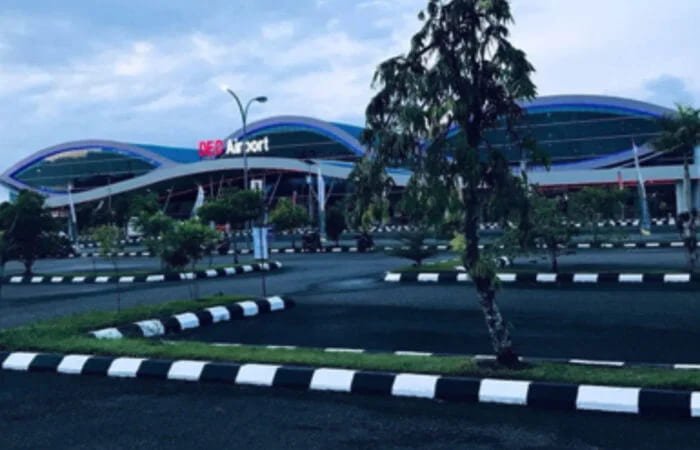Word: Ayu Arman
Papua today is very different from the Papua I first encountered twelve years ago. Both the atmosphere and infrastructure have transformed significantly. Many of those changes remain clearly in my memory—especially when I think about Domine Eduard Osok Airport (DEO) in Sorong, West Papua.

In 2009, I traveled to the easternmost island of Indonesia for a work assignment. It was a four-hour flight from Jakarta to Sorong, and when I landed at Domine Eduard Osok Airport, I was met with an incredibly modest scene. The terminal was small, mostly made of wood, with a waiting room that felt more like a shop house than an airport. There were visible stains from betel nut spit on the floors. At the time, the airport hardly met the basic standards of a proper terminal.
DEO Airport itself was relocated from Jefman Airport, the first airport in West Papua, to its current location in South Remu in 2004. It was renamed after Domine Eduard Osok, a respected pastor and teacher from the Moi tribe. He was known for opening access to education and health services in isolated communities. His service and dedication led him to become a revered figure, and the airport was named in his honor.
✈️ From Humble Beginnings to a Modern Gateway
Because my work often took me around West Papua, I witnessed the gradual transformation of DEO Airport firsthand. Major redevelopment began around 2011 and was completed by 2015. The results were remarkable.
The airport is now a modern and spacious facility covering 13,700 square meters, with two floors and a passenger waiting area that can accommodate up to 750 people. The terminal’s design is inspired by the betel nut fruit, which holds cultural significance in Papua.
🛫 A New Standard of Travel in Papua
Today, DEO Airport features a 2,500-meter-long and 45-meter-wide runway, capable of serving both wide-body jets and propeller aircraft.
It’s now equipped with international-standard amenities, including:
- Two passenger boarding bridges (garbarata)
- Elevators and escalators within the terminal
- X-ray machines, metal detectors, and a full baggage handling system
- Multi-view cabin scanning technology
- Clean, modern restrooms
- Refreshed interior design, making the terminal feel like a modern hub equal to those in larger Indonesian cities
The entire atmosphere of the airport has transformed—efficient, welcoming, and unmistakably modern.
🌄 A Symbol of Progress and Pride
Looking at Domine Eduard Osok Airport today, I feel a deep sense of optimism. Papua is evolving—not just in its physical infrastructure, but in the spirit of its people and places. DEO Airport has become more than just a transit point; it stands as a symbol of transformation, openness, and local pride.
Having witnessed its journey from a humble wooden terminal to a fully modern airport, I believe firmly: Papua is not being left behind.
It is growing—with purpose, with pride, and with hope.
